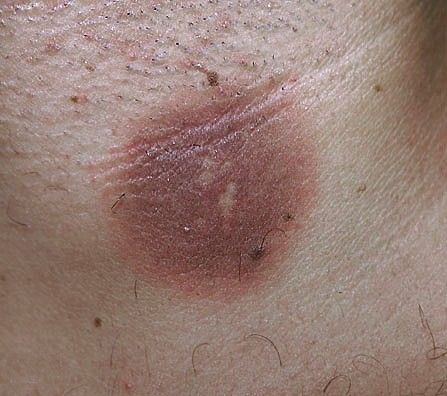Fixed Drug Eruption Caused by Doxycycline
The morphology of a round, red to purple patch, with or without blistering, is typical of a fixed drug eruption. This entity usually manifests as a solitary spot, but can be multiple. Tetracycline antibiotics and barbiturate sedatives are common causes. This patient had been taking doxycycline.


A 41-year-old man was treated with doxycycline for non-gonococcal urethritis. Five days into his therapy, a superficial but painful neck lesion developed. He otherwise felt fine.
Key point: The morphology of a round, red to purple patch, with or without blistering, is typical of a fixed drug eruption. This entity usually manifests as a solitary spot, but can be multiple in nature. The most common cause of this type of drug eruption is the tetracycline family of antibiotics; another common cause is the family of barbiturate sedatives.
Treatment: The offending drug was stopped and a low-potency topical corticosteroid applied twice daily. It took many months for the resulting dyschromia to fade.
Note: Should the same drug, or a structurally related medication, be administered in the future, the same reaction will recur in the same anatomic site.